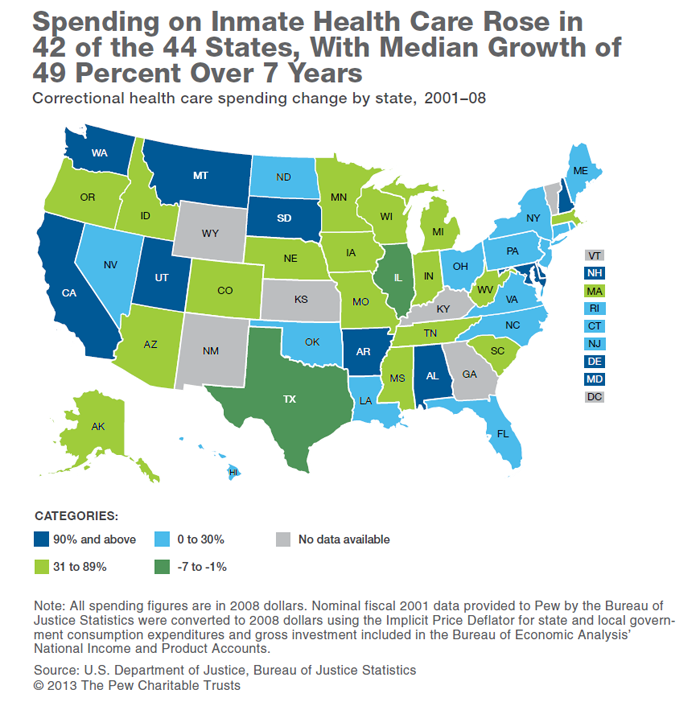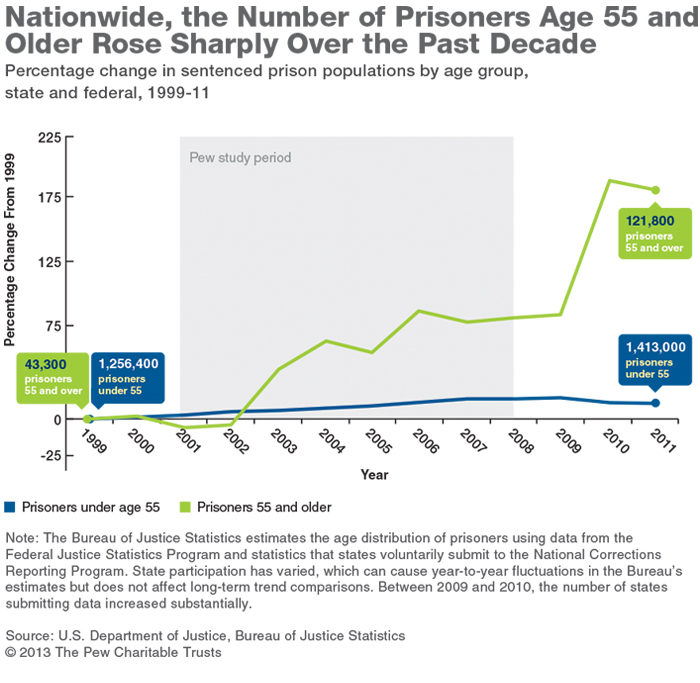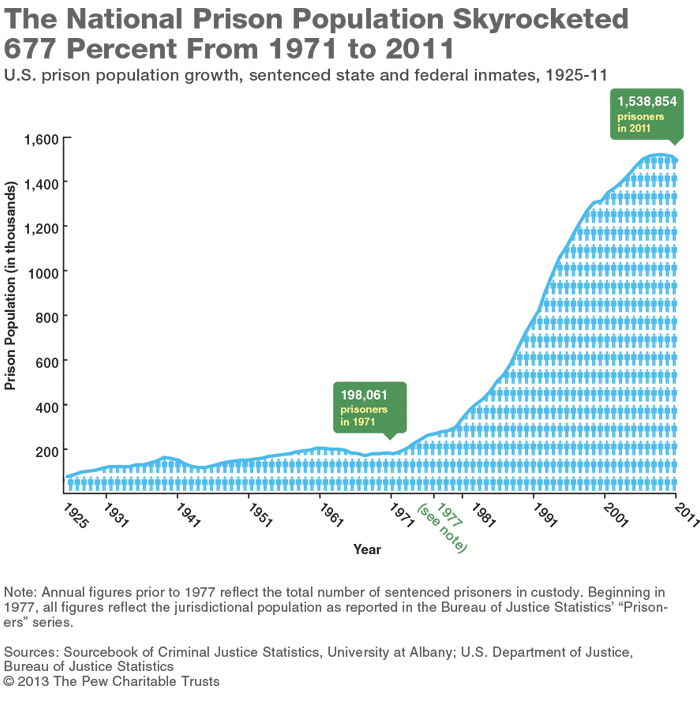Managing Prison Health Care Spending
Nationwide, spending on health care and on corrections is putting serious pressure on state budgets. Medicaid—the largest component of states' health care spending—has been the fastest-growing part of state expenditures over the past two decades, with corrections a close second.
Inmates' health, the public's safety, and taxpayers' total corrections bills are all affected by how states manage prison health care services. Effective treatment of inmates' physical and mental ailments, including substance abuse, improves the well-being of prisoners and can reduce the likelihood that they will commit new crimes or violate probation once released.
To better understand spending for inmate health services, researchers from The Pew Charitable Trusts analyzed cost data from the 44 states that were examined in a study by the federal Bureau of Justice Statistics, or BJS.
A Legal Standard for Care
Prisoners have a constitutional right to adequate medical attention, and states are legally required to ensure that cost-containment strategies preserve health care quality for incarcerated offenders.
Spending up sharply in states
Pew found that prison health care spending in these 44 states totaled $6.5 billion in 2008, out of $36.8 billion in overall institutional correctional expenditures. Most states' correctional health care spending increased substantially from fiscal 2001 to 2008, the years included in the BJS report:
- Spending increased in 42 of the 44 states, with median growth of 49 percent. In 10 states, prison health expenditures grew 90 percent or more.
- Per-inmate health care spending rose in 35 of the 44 states, with 28 percent median growth.
- In 39 of the states, prison health care costs claimed a larger share of the total institutional corrections budget, increasing, on average, from 10 percent in fiscal 2001 to 15 percent in fiscal 2008. Maine, Nevada, North Dakota, Oklahoma, and West Virginia were the only exceptions.
Reasons for growing expenses
This significant growth reflects, in part, the rise in prison populations nationally. Higher per-inmate expenses and the expanding slice of corrections budgets devoted to health care suggest that other factors are also pushing costs up, including:
- Aging inmate populations.
- Prevalence of infectious and chronic diseases, mental illness, and substance abuse among inmates, many of whom enter prison with these problems.
- Challenges inherent in delivering health care in prisons, such as distance from hospitals and other providers.
Strategies to address these challenges
Pew researchers interviewed correctional health care experts across the country to identify innovative strategies to deliver health care to inmates, protect public safety, and control costs.
The report highlights four approaches that were cited frequently during the expert interviews and have produced positive outcomes in some states:
- Employing telehealth technologies—video conferencing and digitally transmitted diagnostic data, for example—to facilitate prisoners' access to care and reduce guarding and transportation costs.
- Implementing outsourcing agreements that ensure the quality of care and control costs.
- Enrolling eligible prisoners in Medicaid and billing the program for qualifying services.
- Using medical or geriatric parole policies to release offenders who are deemed too sick or frail to pose a public safety risk.
These examples offer important lessons as policymakers seek the best ways to make their correctional health care systems effective and affordable.
REPORT CONTENTS
These examples offer important lessons as policymakers seek the best ways to make their correctional health care systems effective and affordable.

This chart was updated in May 2014 to reflect revised North Carolina and Oregon spending data published by the Bureau of Justice Statistics after our report’s initial release.

This chart was updated in May 2014 to reflect revised North Carolina and Oregon spending data published by the Bureau of Justice Statistics after our report’s initial release.













